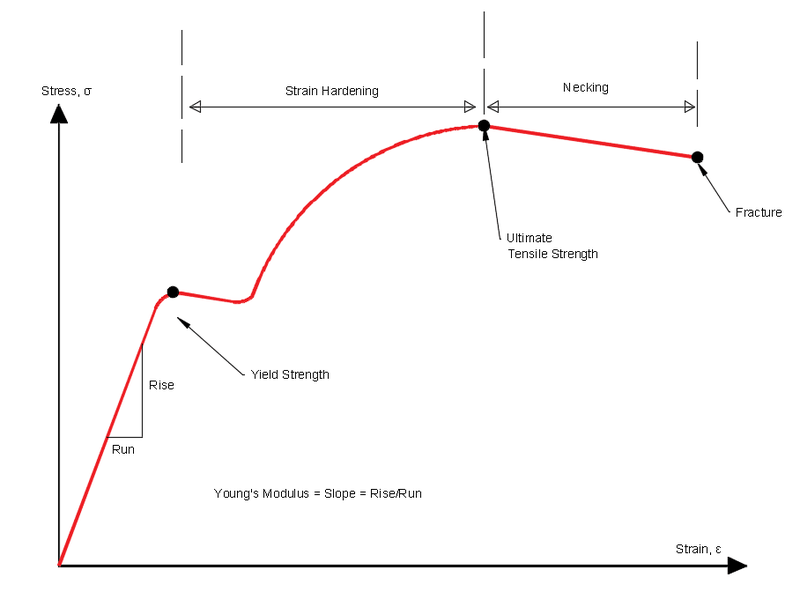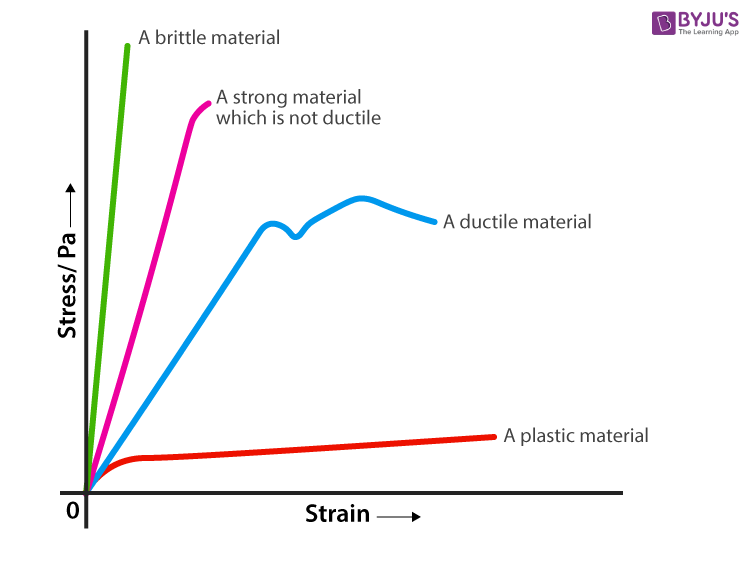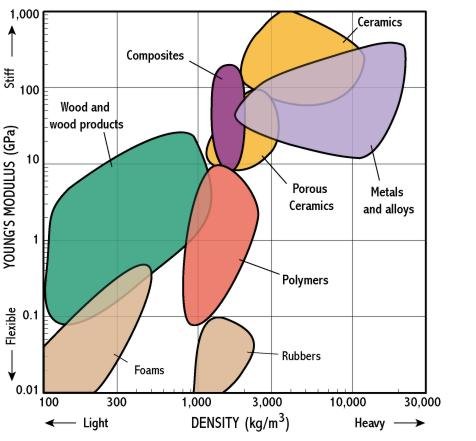Nature of Design
- The rapid pace of scientific discovery and new technologies has had a major impact on material science, giving designers many more materials from which to choose for their products.
- Choosing the right material is a complex and difficult task with physical, aesthetic, mechanical, and appropriate properties to consider.
Physical Properties
- A physical property is any property that is measurable that describes a state of a material.
Matter Takes Up Space
- All matter is made up of four general properties:
Mass
- The amount of matter in an object.
Weight
- Weight is the measure of the pull of gravity on an object.
- In most cases it is proportional to mass, but the strength of gravity can change on different planets and places on Earth.
Volume
- Volume is the amount of space an object or liquid takes up.
Density
- Density is the mass per unit volume; D=M/V.
Physical Properties of Materials Under Certain Conditions
Electrical resistivity
- Electrical resistivity is the measure of a material’s ability to conduct or resist electricity.
- Lower electrical resistivity means it conducts electric current better.
- Materials are classified into conductors and insulators based on their resistivity.
Thermal conductivity
- The measure of how fast heat is conducted through a slab of material with a given temperature difference across the slab.
Thermal expansion (expansivity)
- A measure of the degree of increase in dimensions when an object is heated.
Hardness
- Hardness is the resistance a material offers to penetration or scratching.
Mechanical Properties
- Properties of a material that involve the relationship between stress and strain or a reaction to an applied force.
Tensile strength
- The ability of a material to withstand pulling forces.
Compressive strength
- The ability of a material to withstand being pushed or squashed.
Stiffness
- The resistance of an elastic body to deflection by an applied force.
Toughness
- The ability of a material to resist the propagation of cracks.
Ductility
- The ability of a material to be drawn or extruded into a wire or other extended shape.
Graphing Material Properties
Stress/Strain Graphs
- We can identify and collect considerable amounts of information from a stress-strain graph.
- It is important when selecting materials.
- Every material will perform differently under the application of stress and strain and therefore each material’s graph will be different.

- A stress/strain graph maps how the stress applied to a material (y-axis) affects the strain on the material (x-axis).
- The elastic region is the region in which a material will return to its original shape after being deformed.
- This is generally a straight line.
- At the limit of it’s elastic region (the elastic limit / Yield point) it will hit the plastic region; the material deforms plastically and does not return to its original length or shape.
- The line of the graph will change to a curved line (plastic region).
- The strain continues to increase, the material will eventually reach it's ultimate strength point.
- After the ultimate strength point, the material starts necking, where it stretches out to be thinner and thinner as it is pulled apart.
- When the line ends; it means that the material will fracture at that point. The breaking point / fracture point.

- Different materials have differently-shaped stress/strain graphs.
Material Selection Charts
- A chart used to identify appropriate materials based on the desired properties.
- One material property is placed in the x-axis and another in the y-axis.
- Different groups of materials are organized into "blobs", with larger "blobs" indicating a larger variation of the properties within the material group.

Aesthetic Characteristics
- Aesthetic characteristics can define the appeal of a product beyond its function.
- A product that is attractive to look at, or pleasing to experience, determines its aesthetic appeal.
- Aesthetic characteristics include:
- Smell: the ability to perceive odours such as sweet, acrid or fragrant.
- Taste: sour, sweet, spicy.
- Sound: related to pitches but also the sound of a crisp apple or a chip/crisp bag that makes a crinkling sound.
- Texture: it is how something feels or looks, it can be rough or smooth.
- Appearance: favorable in terms of appearance. The design of appearance in a product must be aesthetically pleasing for it’s target audience (user) to attract the customer.
- Color: can be warm (e.g. browns) or cool (eg blues) can have psychological effects (e.g. greens are calming).
- Shape: geometric or organic.
- Some aesthetic characteristics are only relevant to food, while others can be applied to more than one material group.
- Although these properties activate people’s senses, responses to them vary from one individual to another, and they are difficult to quantify scientifically, unlike the other properties.
Smart Materials
- Materials that have been designed to have one or more properties that can be modified when subject to an external stimuli in a way that the output can be controlled.
Piezoelectricity
- When a piezoelectric material is deformed, it gives off a small electrical discharge.
- When an electric current is passed through it, it increases in size (up to a 4% change in volume).
Shape memory alloys (SMA)
- Shape memory alloys are metals that when deformed, can spring back into its original shape once released
- Shape memory alloys are often returned to their original shape after being heated or cooled.
Photochromicity
- A photochromic material changes opacity and tint in response to an increase in UV light.
- When the light source is removed, it returns to its original tint.
- Photochromic materials are most often used in windows and glasses to block out glare, as they can darken when hit by sunlight.
Electro-rheostatic (ER) and Magneto-rheostatic (MR)
- Fluids that can undergo dramatic changes in their viscosity.
- They can change from thin to thick (viscous) in a fraction of a second when exposed to a electric field (ER) of magnetic field (MR), and the effect is reversed when the field is removed.
- The viscosity of the material can be adjusted based on the field applied, making it easy to fine-tune changes.
Thermoelectricity
- This refers to a smart material that when heated can produce an electric current.
- A thermoelectric material is comprised of two dissimilar conductors.
Sources
https://civilsguide.com/what-is-the-stress-strain-curve/
https://flybynightgraphics.com/article/best/926
http://www-g.eng.cam.ac.uk/125/now/mfs/tutorial/non_IE/charts.html